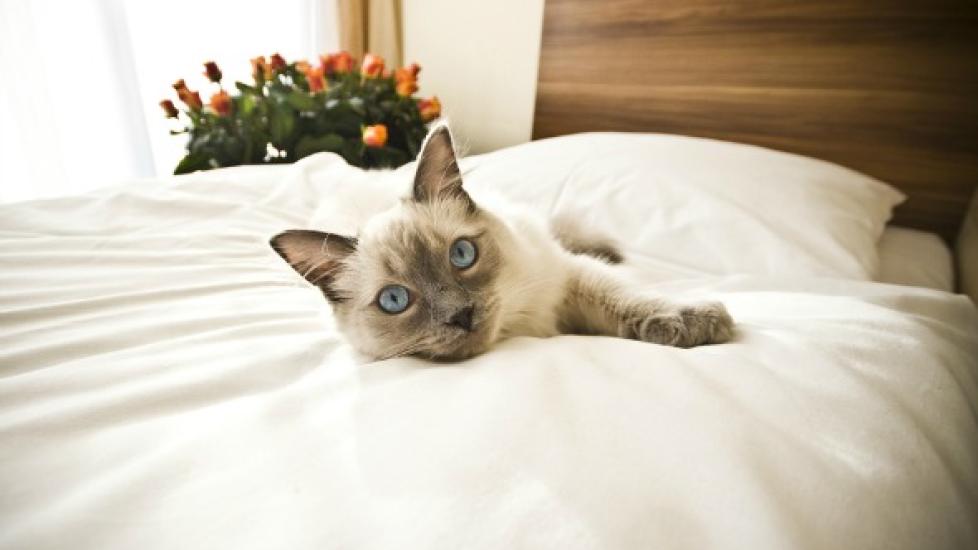Skin Blisters (Vesiculopustular Dermatoses) in Cats
Vesiculopustular Dermatoses in Cats
A pustule is also a small, defined elevation of the outer layer of the skin (epidermis) that is filled with pus – a mixture of white blood cells, cellular debris, dead tissue, and serum, the clear watery fluid that separates from the blood. A vesicle, or blister, is a small, defined elevation of the outer layer of the skin (known as the epidermis) that is filled only with with serum.
Vesiculo- refers to vesicles; this prefixed form is attached to the diseased condition that is concurrent with the cause of the blister.
Pustular refers to an organism that is covered in pustules.
Dermatoses is the plural form of dermatosis, which is used to describe any abnormality or disorder of the skin.
Symptoms and Types
One or more of the following signs may be present:
- Hair loss
- Reddened skin
- Vesicles or blisters: small elevations of the outer layer of the skin filled with clear fluid
- Pustules: small elevations of the outer layer of the skin filled with pus
- Loss of pigment of the skin and/or hair
Causes
Vesicles
- Systemic lupus erythematosus (SLE; an autoimmune disease in which the body attacks its own skin and possibly other organs)
- Discoid lupus erythematosus (DLE; an autoimmune disease involving the skin only, usually the face)
- Bullous pemphigoid (an autoimmune disease with ulceration of the skin and/or moist tissues of the body)
- Pemphigus vulgaris (severe autoimmune disease with ulceration of the mouth, and in the junction between the moist tissues and skin)
Pustules
- Skin infection involving the surface or top of the skin (known as a superficial skin infection), characterized by the presence of pus (pyoderma)
- Bacterial skin infection involving the areas of the body with sparse hair coat (impetigo)
- Superficial spreading pyoderma
- Superficial bacterial infection/inflammation of the hair follicles (bacterial folliculitis)
- Acne
- Pemphigus complex - autoimmune skin diseases
- Pemphigus foliaceus
- Pemphigus erythematosus
- Pemphigus vegetans
- Subcorneal pustular dermatosis (skin disease of unknown cause characterized by the presence of pustules)
- Dermatophytosis (fungal skin infection)
- Sterile eosinophilic pustulosis – a skin disorder characterized by the presence of eosinophils in the pustules; eosinophils are a type of white-blood cell involved in allergic responses by the body and are active in fighting larvae of parasites
Diagnosis
You will need to give a thorough history of your cat's health, including a background history of symptoms, and possible incidents that might have precipitated this condition. Your veterinarian will perform a thorough physical exam on your cat, with a blood chemical profile, a complete blood count, an electrolyte panel and a urinalysis.
The physical exam will include a dermatologic exam during which skin biopsies for histopathology can be taken. Skin scrapings should also be examined microscopically and cultured for bacteria, mycobacteria and fungi.
Treatment
Most cats may be treated on an outpatient basis. However, patients with systemic lupus erythematosus (SLE), pemphigus vulgaris, and bullous pemphigoid may have advanced to the point of severe illness and will require inpatient intensive care.
Living and Management
Ask your veterinarian if your cat might benefit from periodic bathing with an antimicrobial shampoo to help remove surface debris and control secondary bacterial infections. Your veterinarian will schedule follow-up appointments for your cat to check bloodwork. Initially, these follow-up appointments might be as often as every 1-2 weeks. Later, the visits may be tapered off to once every three to four months depending on how your cat responds to the medication.
